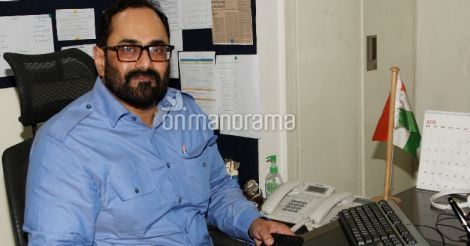The Center's introduction of new financial instruments, including small banks, is in line with its policy of total financial inclusion and digital transformation push, Rajeev Chandrasekhar, MP, has said.
Small banks, like ESAF in Kerala, would transform the lives of people by providing the much-needed support to small entrepreneurs. In the Kerala context, the banks would help ease the high rate of unemployment, 7.4 percent of the population, he said in a statement issued here recently.
In Kerala, the rate of unemployment among those in the 15-29 age group was 21.7 percent in rural areas and 18 percent in urban areas. These figures were alarming and the small banks would help reward enterprising entrepreneurs, he said. To say, the move would encourage growth via the 'kirana' shop, the bicycle repair shop, and the tiny and small business owner.
Moreover, the Center's move would give deprived sections of society the opportunity to utilise banking services. Financial exclusion had kept the weaker sections at the mercy of moneylenders who charged exorbitant rates of interest. The Kerala Prohibition of Charging Exorbitant Interest Act, 2012, criminalised the exploitation of the poor. But, it was for the government to provide the country’s poor greater access to the banking system. The new small banks would be pioneers in this field, he said.
Also, this would bring in more people into the state's revenue framework. The most important structural moves were the creation of a social security net via pension and insurance and the setting up of the MUDRA bank. These were playing a key role in bringing those at the bottom of the socio-economic pyramid into the formal economy, Chandrasekhar said.
The 27.84 crore Pradhan Mantri Jan-Dhan Yojna accounts as on March 1 was testimony to the popularity of the scheme and the desire of the people to be a part of the banking system, he added.
Complete financial Inclusion was not without challenges. There should be regulation to ensure that the beneficiarires were the most-needy. The government must ensure that the schemes do not go the cooperative bank way as post demonetisation cooperative banks were used primarily by the rich in Kerala to launder money. Recent raids on cooperative banks in Kerala by the CBI was proof of such misuse, he said.
Moreover, an article in a prominent news site highlighted the credit survey 2012 as showing high levels of indebtedness in rural Kerala and substantial cash stock in cooperative banks. Also, PMJDY and other such projects must clearly suit the poor and be a conduit for subsidies and small banks should focus on encouraging entrepreneurship, Chandrasekhar said.
Digital empowerment was an component of the Digital India drive. Its success depended largely on Internet penetration. Currently, India had the rare tag of the 'largest population of connected' (250-350 million) and the largest unconnected population (800 million). The government had started the National Optic Fiber Network (NOFN) with the aim of connecting 2.50 lakh grama panchayats in the nation. While the national target was yet to be achieved, Kerala had become the first state to get internet connectivity under NOFN in all villages. This would invariably have a profound impact on digital banking initiatives.
























